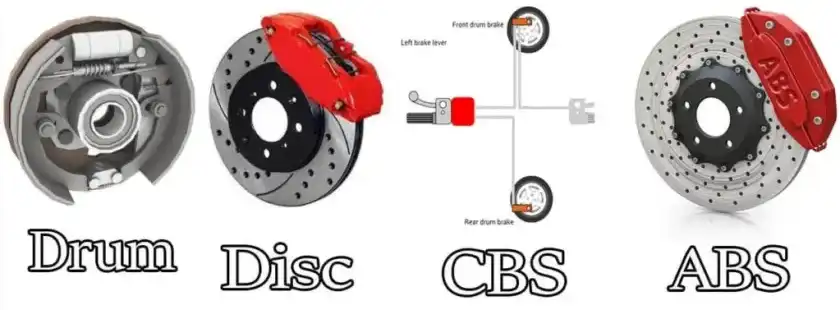Keeping your vehicle’s braking system in top condition is crucial for your safety and the longevity of your car. While brake issues might seem subtle at first, ignoring them can lead to more serious problems down the road. In this guide, we’ll delve into the key warning signs that indicate you might it’s Time for New Brakes, share some history behind braking systems, and offer practical tips for maintaining and upgrading your brakes.
Understanding the Importance of Brake Maintenance
Brakes are one of the most vital safety components of your vehicle. They are responsible for stopping your car safely and effectively. Regular maintenance ensures that your braking system performs optimally, preventing accidents and costly repairs. Think of it as a marketing campaign: consistent checks and adjustments keep everything running smoothly and prevent major issues from cropping up.

Top Warning Signs That Time for New Brakes
1. Squealing or Screeching Noise
If you hear a high-pitched squeal when applying the brakes, it’s often an indication that your brake pads are worn out. Most modern brake pads are equipped with wear indicators that produce this noise as a warning. This sound is akin to an alert banner popping up in your campaign analytics, signaling that something needs your attention.
2. Grinding Sound
A grinding noise can be a more serious issue, signaling that the brake pads are completely worn down, and the metal of the caliper is grinding against the rotor. This can cause significant damage to your braking system. It’s like launching a campaign with broken tracking—everything can fall apart quickly.

3. Vibration or Pulsation
If you feel vibrations or pulsations in the brake pedal, it usually indicates that the rotors are warped. Warping can occur due to excessive heat from heavy braking or towing. Just as a poorly optimized ad campaign can lead to erratic results, warped rotors can cause your braking performance to become unpredictable.
4. Soft or Spongy Brake Pedal
A brake pedal that feels soft or spongy could be a sign of air in the brake lines or low brake fluid. This issue needs immediate attention, much like a sudden drop in campaign performance metrics requires a swift response. It’s Time for New Brakes!

5. Pulling to One Side
If your vehicle pulls to one side when you brake, it could mean uneven brake pad wear or a problem with the brake calipers. This affects your vehicle’s stability, similar to how a poorly targeted campaign can lead to skewed results and a lack of control.
6. Warning Light
Modern vehicles often have a brake warning light on the dashboard. If this light illuminates, it’s a clear sign that there’s an issue with your braking system. It’s like a critical notification in your campaign dashboard—don’t ignore it.

A Brief History of Brakes
The history of brakes is a fascinating journey from rudimentary wooden blocks to sophisticated hydraulic systems. Early vehicles used simple friction methods to slow down, but with advancements in technology, brake systems have become much more efficient and reliable. The development of hydraulic brakes in the early 20th century was a game-changer, and the introduction of disc brakes in the 1960s further enhanced braking performance.
Types of Brake Systems
Understanding the different types of brake systems can help you make informed decisions about maintenance and upgrades:
1. Disc Brakes: Known for their superior performance and heat dissipation, disc brakes are commonly used on the front wheels of modern vehicles.
2. Drum Brakes: Typically found on the rear wheels of older and budget-friendly vehicles, drum brakes are simpler but can be less effective under certain conditions.
3. Anti-lock Braking System (ABS): ABS prevents wheel lock-up during braking, allowing for better steering control. It’s a standard feature in most new cars.
4. Electronic Brake-force Distribution (EBD): EBD works with ABS to optimize braking force between the front and rear wheels, improving stability.

Tips for Maintaining Your Brakes
- Regular Inspections: Have your brakes inspected regularly by a professional. Just like frequent campaign reviews, regular checks help catch issues before they become major problems.
- Check Brake Fluid: Ensure that the brake fluid is clean and at the correct level. Dirty or low brake fluid can lead to brake failure, similar to how outdated metrics can skew your campaign results.
- Listen and Feel: Pay attention to any unusual sounds or changes in braking performance. Early detection can prevent more significant issues down the line.
- Address Warning Signs Promptly: If you notice any of the symptoms mentioned, address them as soon as possible. Ignoring these signs can lead to more extensive damage and higher repair costs.
- DIY Checks: If you’re handy, you can perform basic brake checks yourself. Look for worn pads and ensure that everything is properly lubricated. However, some issues are best handled by professionals.
- Invest in Quality Parts: When replacing brake components, choose high-quality parts. Opting for cheaper alternatives might save money initially but could lead to more significant problems later.

Conclusion of Time for New Brakes
Keeping your brakes in good condition is essential for safe driving and vehicle longevity. By paying attention to the warning signs and performing regular maintenance, you can ensure that your braking system remains reliable. Just as you would monitor and tweak a marketing campaign to keep it effective, maintaining your brakes helps you avoid potential problems and stay safe on the road.
For more information on brake parts and maintenance tips, visit our eParts website. Safe driving!


